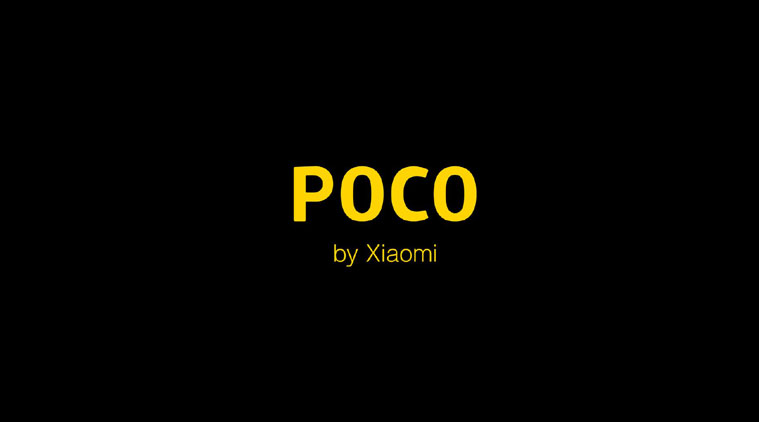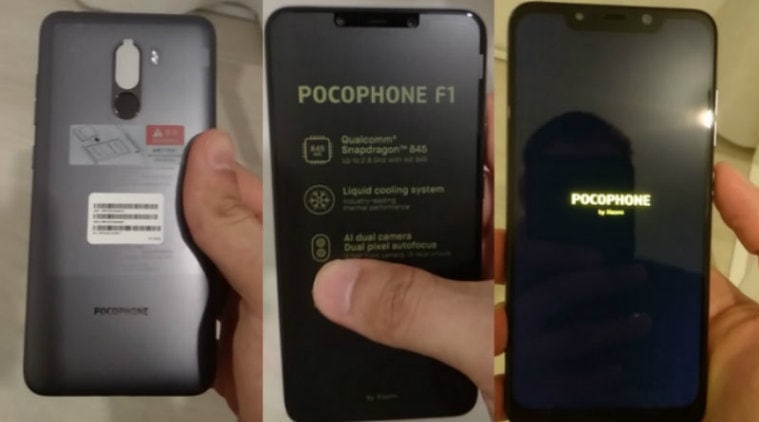 Xiaomi’s Pocophone F1 is supposed to be an affordable flagship, which will launch in India soon. Here’s why this phone matters more for Xiaomi.
Xiaomi’s Pocophone F1 is supposed to be an affordable flagship, which will launch in India soon. Here’s why this phone matters more for Xiaomi.
Last week, Jai Mani, Xiaomi’s product manager for India, took to Facebook to announce POCO, a new sub-brand from the Chinese technology company. Mani, who has had a quiet innings at Xiaomi over the past few months, has been tasked with shaping this new brand.
“As a small outfit within Xiaomi, we have the freedom to start from scratch, zeroing in on the product choices that matter. At the same time, with Xiaomi’s supply chain, operations and service infrastructure behind us, we can ensure the highest quality for our fans”, Mani said while sharing a manifesto of the POCO sub-brand on Facebook.
Mani said POCO is a new sub-brand that is “all about making a powerful smartphone with the technologies that truly matter” and “without breaking the bank”. While he did not share details about what’s coming, Mani said that the first POCO-branded device, likely to be called the Pocophone F1, will go back to the basics and focus entirely on speed.
The news created some buzz in the industry. After all, Xiaomi is one of the most disruptive smartphone brands out there. Everyone knows Xiaomi wants to aggressively expand its market share, but even then this move was unexpected.
The one logical theory is that with POCO, Xiaomi wants to create a create a new line of smartphones that are not only come with high-end specifications, but cost less than a current flagship. The word on the street is that the POCO-branded smartphones will be launched in many markets, including India and Spain.
“Xiaomi has a huge fan following that can feed into POCO,” Faisal Kawoosa, an analyst with CMR (CyberMedia Research) told indianexpress.com over mail. “It also has a very strong online presence. These two are positives for POCO to start with. Everything out there is speculation unless it comes officially. But, looking at Xiaomi, it has come a long way in improving the product built. So all that learnings must have gone to POCO as well,” he said.
Kawoosa added that with Jai Mani behind the brand, the products might be worth consideration.
Xiaomi still seen as budget smartphone maker
Xiaomi is perceived as the coolest smartphone company around, media-friendly and open to suggestions from fans. The company sells millions of smartphones each quarter. But step back a bit and you realise that Xiaomi is stuck in its image of being just a budget smartphone maker. That is not a great position to be in as a smartphone brand, at least not in the long run.
While the company did launch a number of high-end smartphones in the Indian market, including Mi Mix 2, the response has been tepid. Despite two price cuts, Mi Mix 2 couldn’t get anywhere near the attention a Redmi Note 5 or Redmi 5A has garnered.
Xiaomi has been at the top of the smartphone brand race in India for a couple of quarters in terms of volume. But it will want to go up in the value game too and that cannot happen with just affordable smartphones like Redmi 5A or Redmi Y2. That will require good numbers on models with higher average selling prices like the OnePlus range or even Huawei’s new mid-range.
The iPhone X, despite its $999 price tag is also the most popular model among all the smartphones launched in the past few quarters. So clearly there is an appetite for expensive phones too.
A threat from OnePlus is looming
OnePlus, despite being called a niche brand, recently outsold both the iPhone X and Galaxy S9+ in the premium segment in India. Decent design, excellent built quality, clean Android software with no bloatware, and specifications challenging the Galaxy S9+ are some of the reasons why OnePlus 6 went on to come to the best-selling phone in its price segment.
OnePlus strategy to sell phones with high-end specifications at affordable prices has worked in India. People wait for new OnePlus and there some who upgrade every year, which suggests the start of a very iPhone-like loyal user base.
 A leaked image of the Xiaomi Pocophone F1.
A leaked image of the Xiaomi Pocophone F1.
When the OnePlus 6 was announced at Rs 34,999, not everyone was convinced the pricing will work. Months, on OnePlus has shown that its strategy is working and as the premium smartphone in India grows, it has been able to offer a viable alternative.
“Yes, OnePlus success excites everyone about the segment. But, that is not the only reason,” Faisal said, adding that “across segments, 59 per cent of the sales were for upgrades and replacements as per CMRs India Smartphone Movement Report 2Q 2018. This means in a monthly sales average of 10-12 million Smartphones, replacements and upgrade opportunity is 6-7 million.”
This suggests there is an opportunity for others to enter this segment.
Creating a sub-brand has its own challenges
Building a separate brand is perhaps not as easy as it looks like. Of late, many companies have failed to establish a separate brand and in most cases, lack of differentiation was one common factor.
Lenovo’s tryst with Motorola has not really worked for either brand in India. In fact, both seem to have lost steam in the process, despite the high brand equity. Lenovo even has a sub-brand of its own called Zuk, which seems to have vanished despite its decent product offerings. A similar situation seems to be brewing in the Huawei household with the Honor sub-brand, though the group as a whole has started gaining momentum in India.
According to Kawoosa, sub-brands haven’t really been successful so far. But not all brands have failed because of the same reasons, he suggested, giving the examples of Lava and Xolo failing to figure out marketing strategies, while Micromax and Yu failed to finalise brand identities. Lenovo and Motorola, meanwhile, had an overlap on everything from product to price and segment.
The reason for the Xiaomi sub-brand play could be even more simple. When the OnePlus 5 was launched just a few months after the OnePlus 3T, CMR analysed that over 8 per cent users were switching from Xiaomi to OnePlus.
“This was still a huge jump, as the majority of Xiaomi phones are sub 10k and OnePlus 5 was around 34k,” he said. According to Kawoosa, Xiaomi will be focusing on completely different segments with the Mi and POCO and thus trying to offer upgrades within its portfolio.